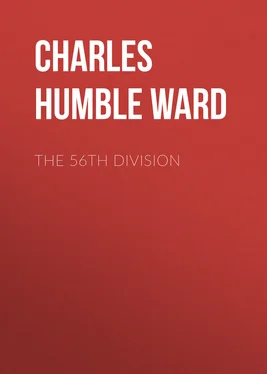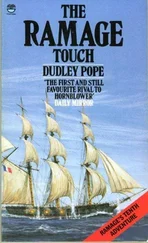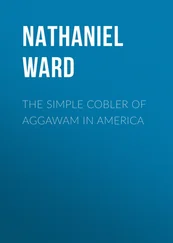Charles Humble Dudley Ward - The 56th Division
Здесь есть возможность читать онлайн «Charles Humble Dudley Ward - The 56th Division» — ознакомительный отрывок электронной книги совершенно бесплатно, а после прочтения отрывка купить полную версию. В некоторых случаях можно слушать аудио, скачать через торрент в формате fb2 и присутствует краткое содержание. Жанр: foreign_prose, История, foreign_edu, foreign_antique, на английском языке. Описание произведения, (предисловие) а так же отзывы посетителей доступны на портале библиотеки ЛибКат.
- Название:The 56th Division
- Автор:
- Жанр:
- Год:неизвестен
- ISBN:нет данных
- Рейтинг книги:5 / 5. Голосов: 1
-
Избранное:Добавить в избранное
- Отзывы:
-
Ваша оценка:
- 100
- 1
- 2
- 3
- 4
- 5
The 56th Division: краткое содержание, описание и аннотация
Предлагаем к чтению аннотацию, описание, краткое содержание или предисловие (зависит от того, что написал сам автор книги «The 56th Division»). Если вы не нашли необходимую информацию о книге — напишите в комментариях, мы постараемся отыскать её.
The 56th Division — читать онлайн ознакомительный отрывок
Ниже представлен текст книги, разбитый по страницам. Система сохранения места последней прочитанной страницы, позволяет с удобством читать онлайн бесплатно книгу «The 56th Division», без необходимости каждый раз заново искать на чём Вы остановились. Поставьте закладку, и сможете в любой момент перейти на страницу, на которой закончили чтение.
Интервал:
Закладка:
In a most interesting paper on the proposed attack Gen. Hull says:
“The object of the VII Corps attack will be to establish itself on the line 16 Poplars-Nameless Farm-Little Z-Tree at E23a12.
The 46th Division will attack from the north and the question was discussed:
( a ) Should we endeavour to secure a footing on the ridge E29c-K5a in the initial assault, or
( b ) Should the 56th Division first secure the German third line from the south-east corner of Gommecourt Wood and then, under Corps direction, launch a second attack to secure the ridge?
Whichever solution the Corps Commander considers it wisest to adopt, there is one point which I wish to urge: that no advance through the village or park of Gommecourt should be attempted until the ridge E29c-K5a is secured.
The clearing of the village and wood is bound to be a costly enterprise if the enemy makes any attempt to fight it out. It is to be hoped that the heavy bombardment will very seriously affect the moral of the garrison of the village and park, and I consider that the knowledge that they were cut off from escape and from reinforcements might have so great an effect on the German troops as to make them surrender and so save us valuable troops for further operations.
I was, and still am, in favour of the first solution, i.e. to secure the Quadrilateral in the first assault. The reasons which have been urged against this course are:
( a ) That at Loos no success was achieved after a certain limited distance had been carried.
( b ) That in the event of either the 46th or the 56th Divisions failing to achieve their objective, the detachment of the other would be in an extremely isolated position.
I have carefully considered both these arguments, and do not think there is any reason to alter my opinion.
At Loos the 47th Division was the only division to which a definite objective was given. Its rôle was to form a defensive flank on the right of the IV Corps. Its left flank advanced nearly 2,500 yards behind the German front line without serious loss or difficulty. In the present case I am proposing an advance, at one point on each divisional front, of only 800 yards, in the case of the 56th Division, and less in the case of the 46th Division. In the present case, too, we have the additional advantage of much heavier artillery, more ammunition, and a salient to attack.
As regards the second argument, that in the event of one or other attack failing the detachment of the other division would be isolated:
In the event of my reaching my objective in K5a, and the 46th Division failing to reach E29c, I should consider it my duty to put in troops (if necessary from my reserve brigade) to help the 46th Division.
Troops at K5a would be within 500 yards of the unit at the south-eastern edge of Gommecourt, and in direct communication by visual signalling with my present trench system, so that they can hardly be considered isolated, and the risk, if any, is, I consider, worth running in order to isolate completely the enemy troops in Gommecourt Park and village.
I do not like the idea of delay and a second attack to capture the Quadrilateral in K5a. The second attack would have to be launched from our front line trenches, as I do not consider it would be feasible to organise and launch an attack from the newly-captured trenches. Any delay would enable the enemy to put his barrage in front of our front-line system, as if there is a weak point in our organisation, it is in the number of counter-batteries available to deal with the enemy guns. If we delay we lose the advantage surprise would give us.”
While these problems were being discussed, Sir Douglas Haig had decided to hurry on his preparations. We have seen that his desire was to delay as much as possible and perfect his machine, also that every day meant to him added strength. But meanwhile the Entente Powers were being pressed in another direction. The Austrians had attacked the Italians with great initial success. By the end of May the situation on that front was so serious that the Russian offensive was opened in the early days of June in order to relieve the pressure.
The Germans accuse the Austrians of having drained their front in Galicia of artillery for their Italian offensive, and also of holding the line with troops of poor quality. However that may be, Gen. Brussiloff’s army, “after a relatively short artillery preparation … got up from their trenches and simply marched forward.” Falkenhayn has a delightful observation on the whole business: “A ‘reconnaissance’ like Brussiloff’s was only possible, of course, if the General had decisive reason for holding a low opinion of his enemy’s power of resistance. And on this point he made no miscalculation.”
The immediate effect of the Russian success was the transfer of three divisions from the Western Front, and later more followed; but the Germans were still very strong in numbers, and there was no slacking off of their efforts on Verdun. They were able to help the Austrians to check the Russian advance and eventually to repulse it, but, on the other hand, the Italian counter-attack met with success and drove the Austrians back.
Sir Douglas Haig says that
“The heroic defence of our French Allies had already gained many weeks of inestimable value and had caused the enemy very heavy losses; but the strain continued to increase. In view, therefore, of the situation in the various theatres of war, it was eventually agreed between Gen. Joffre and myself that the combined French and British offensive should not be postponed beyond the end of June. The object of that offensive was threefold:
(1) To relieve the pressure on Verdun.
(2) To assist our Allies in the other theatres of war by stopping any further transfer of German troops from the Western Front.
(3) To wear down the strength of the forces opposed to us.”
We begin to see now the dominating influence of Verdun. In any case the offensive could not have been postponed much longer, and if it was an alteration of plan forced by the enemy, it was not to be compared with the abandonment by the Germans of their offensive—which Falkenhayn says he had prepared against the British with the object of forestalling the Entente blow on the Western Front—due to the uncomfortable situation of the Austrians.
Probably, however, the date did influence the approaching action of the 56th Division. The new front line was still a long way from the enemy. The Queen’s Westminster Rifles succeeded in advancing a small sector of the line by a hundred yards and, had there been time, the whole division would have crept closer before jumping on the enemy.
The weather, too, was very bad.
In due course Gen. Hull issued his preliminary instructions, from which it will be seen that the decision to attempt the capture of the Quadrilateral in one operation had been taken:
“The attack of the 56th Division will be carried out by the 168th and 169th Brigades, whose tasks will be as follows:
( a ) The objective of the 168th Brigade will be to capture the German line from Fair Trench, about K11d13, along Farm, Fame and Elbe, Felon, to a point in Fell fifty yards north-west of the trench junction at K5c52, and to establish itself in three strong points:
(1) About Farmyard, Farmer, Farm.
(2) About Elbe, between Et and Felon.
(3) About cross-trenches of Fell and Felon with Epte.
168th Brigade will be responsible for the construction of a fire trench facing south-east to connect the right flank of the captured line to our present line in W47.
( b ) The task of the 169th Brigade will be carried out in three phases. The object of the 169th Brigade in the first phase will be to capture the line of German trenches from the left of the 168th Brigade along Fall, Fellow, the Cemetery, Eck, the Maze, Eel, and Fir, and to establish strong points:
Читать дальшеИнтервал:
Закладка:
Похожие книги на «The 56th Division»
Представляем Вашему вниманию похожие книги на «The 56th Division» списком для выбора. Мы отобрали схожую по названию и смыслу литературу в надежде предоставить читателям больше вариантов отыскать новые, интересные, ещё непрочитанные произведения.
Обсуждение, отзывы о книге «The 56th Division» и просто собственные мнения читателей. Оставьте ваши комментарии, напишите, что Вы думаете о произведении, его смысле или главных героях. Укажите что конкретно понравилось, а что нет, и почему Вы так считаете.




![Александр Ирвин - Tom Clancy’s The Division 2. Фальшивый рассвет [litres]](/books/417744/aleksandr-irvin-tom-clancy-s-the-division-2-falsh-thumb.webp)







